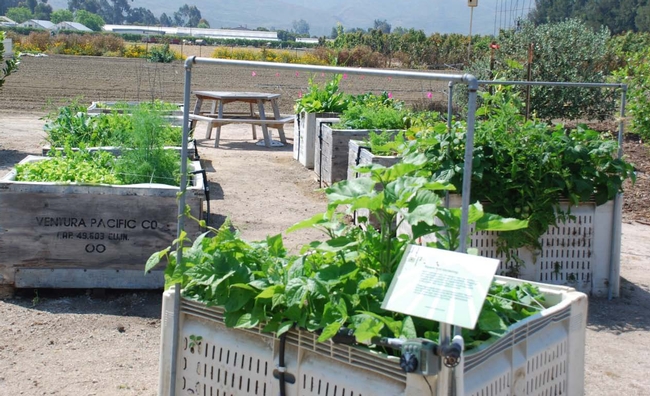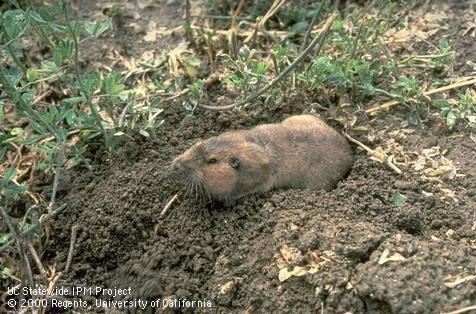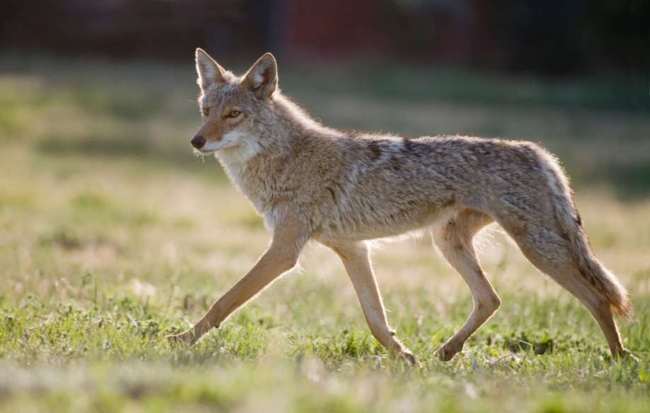
Posts Tagged: series
California State Soil - San Joaquin Series
Many states have a designated state bird, flower, fossil, mineral, etc. In California, the state bird is the California Valley Quail, the state flower is the Golden Poppy, the state fossil is the Sabertoothed Cat, and the state mineral is Native Gold. The state rock is Serpentine which contains chrysolite asbestos which is a carcinogen. It's a beautiful rock, though.
The state soil is the San Joaquin series. The series concept is that a given soil has certain properties like pH, depth, color, texture, etc. that distinguishes it from other “soils” or series. So wherever this soil is found it is given the same name. San Joaquin series is a soil that is found primarily along the foothills of the Sierras in the Central Valley. The name comes from where it is first described, in this case, San Joaquin, but it is found in other places. Yolo series is named after a soil on the campus at UC Davis in Yolo county, but it is also found in San Diego county, and in other states.
A description of the state soil can be found at the link below, as well as the state soils in other states:
http://www.soils4teachers.org/files/s4t/k12outreach/ca-state-soil-booklet.pdf
http://www.soils4teachers.org/state-soils
Soils can be highly variable depending on the context in which they are found. Going to flat old Kansas which is actually flatter than a pancake (http://www.usu.edu/geo/geomorph/kansas.html), the variability from spot to spot across miles can be minimal. But going to a place like Ventura, Santa Barbara, San Luis Obispo Counties of the Sierra foothills, you can't step on the same soil twice. That's because of the terrain and landforms. Where there is natural erosion (yes, it doesn't take humans to cause erosion) or accelerated erosion (this is where humans have often changed the landscape with roads, houses, removing ground cover) soil gets moved around and deposited in different positions and over time forms different soils with different properties. On large tracts of land that have not been altered much, such as avocado orchards, the naturally formed soils can be seen. In a housing tract where soil has been moved around to level and compact housing pads, it is often hard to find a natural soil because it is so highly disturbed. The soil can have been moved from one end of a 100 acres tract to the other with big equipment. It's all one big homogenous mix down to several feet at times depending on the slope.
In many cases, it is still possible to see the natural soils and knowing their series classification, it's possible to learn some of the properties and some of the problems that will be encountered when working with them. Knowing the pH prior to working it means that it could be adjusted before planting. It's a whole lot easier to adjust before planting than when the plants are in the ground.
You can see the soils in your area by going to the USDA-NRCS (Natural Resources Conservation Service) website - https://websoilsurvey.sc.egov.usda.gov/App/HomePage.htm - and typing in the area code to find the soil at a given site. It probably isn't the state soil series, but it's your soil series.
For a great text on understanding soils, check out Soils: An Introduction by Michael Singer and Don Munns.
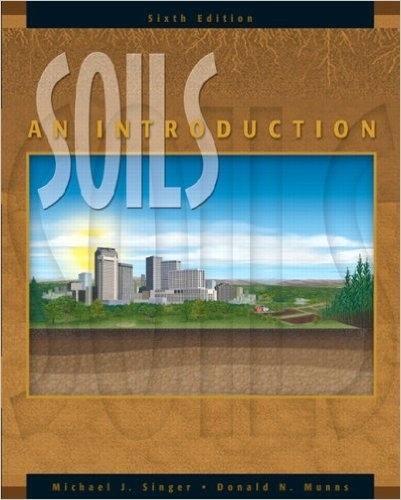
soils
Problems with vermin, coyotes and birds in your grove or specialty crops? Vertebrate Pest Conference Seminar Series Coming Soon!
The Vertebrate Pest Council, with assistance from the Pesticide Applicators Professional Association, will be hosting a series of seminars throughout the state starting in late February. These seminars will be focused entirely on human-wildlife conflict issues. Check out the agendas for each location, and if interested, sign up. They will be providing up to 7.5 hours of CE and lunch will be provided.
Seminar Sessions & Locations:
Petaluma, Feb 28: http://www.papaseminars.com/Images/Seminars/PETALUMAVPCSEMINAR22817_28-2-2017.pdf
Stockton, Mar 2: http://www.papaseminars.com/Images/Seminars/STOCKTONVPCSEMINAR3217_2-3-2017.pdf
San Bernardino, Mar 7: http://www.papaseminars.com/Images/Seminars/SANBERNARDINOVPCSEMINAR3717_7-3-2017.pdf
Fresno, Mar 9: http://www.papaseminars.com/Images/Seminars/FRESNOVPCSEMINAR3917_9-3-2017.pdf
Registration: http://www.papaseminars.com/Seminar

Birds

Coyote irrigation damage

Bird Pest
Seed storage
The 2011 UC Master Gardener Vegetable Demonstration Garden Project has recently finished. A group of certified Master Gardeners and trainees spent time each week from January 27 through December 15 learning vegetable gardening techniques through hands-on experience.
They documented their project so that they could impart lessons learned throughout the2011 project. This article is the eighth, and final, in a series to share this knowledge.
Seed storage:
Saving and storing seeds can provide additional fun and learning opportunities to vegetable gardening.
- Be sure that seeds being used are not beyond their expiration date.
- Consider saving seeds from plants with superior characteristics (e.g., hardy during cool temperatures).
- If you plan to save the seeds from your corn plants, you need to take steps to avoid cross-pollination from other corn plants. To keep heirloom corn pure, you have two options: 1) bag the ears and tassels, and hand pollinate, or 2) arrange it so your corn blooms earlier than any other corn around you.
- The female flowers of each crop can be fertilized only by pollen from male flowers of the same species. Cross pollination, however, can occur between varieties within a species. When crosses occur between members of the same species, we do not see the effect of the cross the first year. However, if the seeds are saved and planted, the plants will produce fruit that will be different from either of the parents.
- There is no reason to soak zucchini seeds in water prior to storage since the pulp can readily be separated from the seed. The pulp on tomato seeds, however, is tightly attached to the seeds making it necessary to soak the seeds for a few days. Once the pulp begins to ferment, it is easily separated from the tomato seeds.
- After soaking tomato seeds in water for two or three days, the viable seeds will sink to the bottom of the container. Dispose of the tomato seeds that float to the surface.
- The way to tell if zucchini seeds are viable is to look for plump seeds. Small flat zucchini seeds will most likely not germinate or will be of poor quality. Since viable zucchini seeds will float in water, the float test used to differentiate poor quality tomato seeds from viable seeds should not be used.
Questions on gardening? Please contact our Master Gardener helpline at 645-1455 or contact them by email at mgventura@ucdavis.edu.
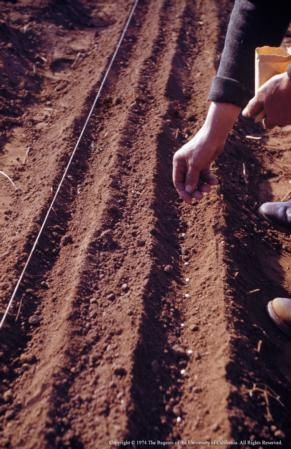
Plant protection
The 2011 UC Master Gardener Vegetable Demonstration Garden Project has recently finished. A group of certified Master Gardeners and trainees spent time each week from January 27 through December 15 learning vegetable gardening techniques through hands-on experience.
They documented their project so that they could impart lessons learned throughout the2011 project. This article is the seventh in a series to share this knowledge.
Plant protection:
Necessity in protecting plants from vertebrae pests varies depending on location.
- Seedlings should be protected from animals with cages once planted in the soil.
- When constructing cages for plants, design them so they can be easily removed even if the plants become overgrown. Otherwise, the plants may be injured as the cages are removed.
- Be sure to bury the frame of the frame of the cage to prevent mice from crawling under it.
- Small grocery paper bags make nice collars for corn plants.
- Plants placed in soda bottles for protection from critters will eventually grow out of the bottle making them vulnerable to pests. Cages may provide better protection from rabbits and other grazing animals.
- Don’t leave cages on the plants too long. As the plants outgrow the cages, they will become difficult to remove. Also the stem of the plant will be weak since support provided by the cage does not allow full stem development.
Questions on gardening? Please contact our Master Gardener helpline at 645-1455 or contact them by email at mgventura@ucdavis.edu.
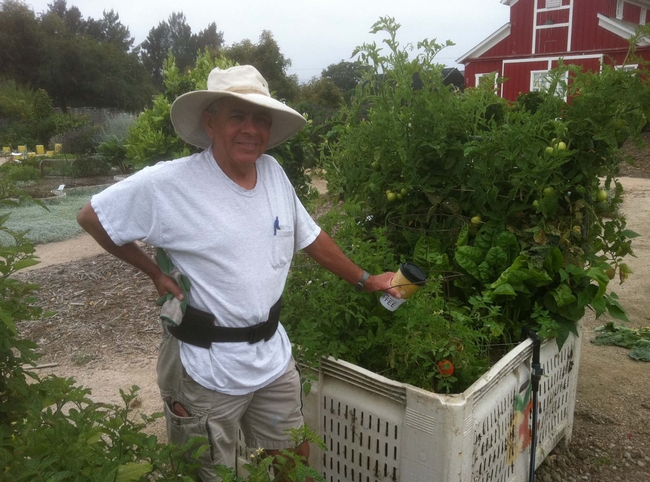
Garden Tools
The 2011 UC Master Gardener Vegetable Demonstration Garden Project has recently finished. A group of certified Master Gardeners and trainees spent time each week from January 27 through December 15 learning vegetable gardening techniques through hands-on experience.
They documented their project so that they could impart lessons learned throughout the2011 project. This article is the sixth in a series to share this knowledge.
Garden tools:
Tools in the garden can save time and effort.
- A hula hoe is a great tool to extract small weeds.
- A pocket knife is a handy tool that should be carried while gardening.
- The blades of bypass pruners and loppers should only be sharpened on one side of the blade. If they are sharpened on both sides of the blade, a small gap will be created between the blades allowing the material being cut to wedge itself between the blades and precluding a clean cut. Anvil-type pruners typically need to be sharpened on both sides of the blade. When sharpening tools, only sharpen surfaces that were originally sharpened at the factory.
Questions on gardening? Please contact our Master Gardener helpline at 645-1455 or contact them by email at mgventura@ucdavis.edu.
